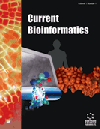
Full text loading...

Breast carcinoma continues to be a predominant factor contributing to cancer-associated mortality in women across the globe. Despite the significant advancements in medical technology today, there remain challenges in precisely stratifying patients based on their risk profiles and identifying the most effective treatment strategies for breast cancer. The regulation of metabolism and transcription factors is considered to have a close association with cancer progression.
In this study, the co-expression network was utilized to identify transcription factors associated with metabolic molecule subtypes, and ultimately, a risk scoring model was constructed. WGCNA is also employed to explore related transcription factor modules, and the VIPER method is used to infer the state of transcription factors. A machine learning methodology, specifically SVM, has been employed to model patient survival outcomes.
We found that patients with lower risk scores exhibit extended survival durations and chemotherapy response in comparison to their high-risk counterparts. Meanwhile, high-risk patients exhibited higher levels of chromosomal instability and tumor immunogenicity relative to low-risk patients. Additionally, we constructed a ceRNA network and successfully identified 39 master regulators associated with survival outcomes.
This study provided a method for using the protein activity of transcription factors for subtyping breast cancer patients.
We achieved risk stratification of breast cancer patients and accurately predicted their prognosis. The result also highlighted various contributors impacting the clinical prognosis of breast cancer patients.

Article metrics loading...

Full text loading...
References


Data & Media loading...
Supplements